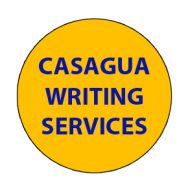
It’s a common fear among writers: that an editor will strip away their voice, sanitize their quirks, or reshape their vision into something unrecognizable. But effective editing isn’t about imposing a new identity; it’s about helping the existing one shine brighter. It’s about polishing the gem without dulling its inherent sparkle.
The Editor is a Sculptor, not a Demolition Crew
The core principle is respect for the author’s intent and voice. Before a red pen touches the page, an editor must ask:
Think of your first draft as a block of marble. It contains the masterpiece, but it’s hidden beneath excess material. A good editor doesn’t smash the block; they carefully chip away, refine the contours, and bring out the form you always intended.
- What is the heart of this story?
- What is the author trying to achieve?
- What is the unique voice that makes this piece theirs?
With these questions as a guiding light, the editing process becomes a collaborative effort to elevate, not erase.
Improving the Good: Polishing the Gems
Even the strongest elements of a first draft can be improved. This is how we maximize their impact:
- Sharpening the Voice: If the voice is strong, we make it stronger. We look for opportunities to amplify unique linguistic tics, specific rhythms, or characteristic turns of phrase. We remove any clichés or generic wording that dilute the individuality. For instance, if your character has a dry, sarcastic wit, ensure every line they deliver crackles with that specific energy.
- Deepening Characterization: A compelling character can become unforgettable with subtle refinements. We explore opportunities for deeper internal monologue, more nuanced reactions, or unexpected but authentic actions. If a character is meant to be brave, we show their fear before they act to make their bravery more resonant.
- Tightening Pacing in Engaging Scenes: If a scene is already gripping, we make it even more so. We remove extraneous words, tighten dialogue, and ensure every sentence propels the reader forward. A fast-paced chase scene can become breathless by cutting unnecessary descriptions.
- Enhancing World-Building: For fantasy or historical fiction, we look for ways to weave in more sensory details, cultural nuances, or historical tidbits. We show, don’t just tell, the unique aspects of your setting.
- Elevating Imagery and Metaphor: If your prose already uses vivid imagery, we push it further. We seek out fresh comparisons that surprise and delight the reader, reinforcing the emotional tone or thematic elements.
Removing the Less Engaging: Pruning for Growth
This is often the hardest part, but it’s essential for the health of the overall narrative. We “Kill your darlings” in several ways, all of them ruthlessly effective:
- Identifying “Dead Weight”: We look for paragraphs, sentences, or even entire scenes that don’t advance the plot, deepen character, or contribute to the theme. These might be:
- Info-dumps: Long passages of exposition that could be woven into the narrative or revealed through dialogue.
- Repetitive information: Saying the same thing multiple times in different ways.
- Unnecessary descriptions: Details that don’t serve a purpose or ground the reader.
- Redundant dialogue: Conversations that could be condensed or cut entirely.
- Subplots that lead nowhere: Threads that distract from the main narrative arc.
- Confronting Weak Scenes: A scene might be necessary for plot, but if it falls flat, it needs work. Instead of outright deletion, we consider:
- Reimagining the delivery: Can the information be conveyed differently? Through action? A character’s internal struggle?
- Injecting conflict or tension: Even a quiet scene can have underlying tension.
- Changing the point of view: Could another character’s perspective make it more engaging?
- Eliminating Passive Voice (and other stylistic weaknesses): As discussed previously, the passive voice can sap energy. Similarly, weak verbs, overuse of adverbs, and convoluted sentence structures can bog down the reader. These aren’t about changing the what, but improving the how.
- Streamlining for Pacing: If the story drags in certain sections, we identify where the energy dips. This might mean cutting entire paragraphs or chapters that slow the momentum, or condensing events that could be summarized.
The Iterative Process: Read, Reflect, Refine
Editing is rarely a one-pass affair. We consider editing an iterative process of reading, reflecting, and refining.
- Distance is Key: We step away from your manuscript during editing. Fresh eyes catch more.
- Different Passes: We focus on different elements in separate passes (e.g., one pass for plot, one for character, one for dialogue, one for sentence-level clarity).
- We Read Aloud: This is invaluable for catching awkward phrasing, repetitive rhythms, and passive voice.
The Takeaway?
Ultimately, editing is an act of love for your story. It’s the commitment to making it the best possible version of itself, allowing its true spirit to resonate clearly and powerfully with every reader. It’s about understanding that sometimes, less is more, and that true refinement only enhances the inherent beauty of the original creation.
We hope this blog post helps you appreciate how our Casagua writers approach the editing process. If you have any questions, please feel free to contact us.
